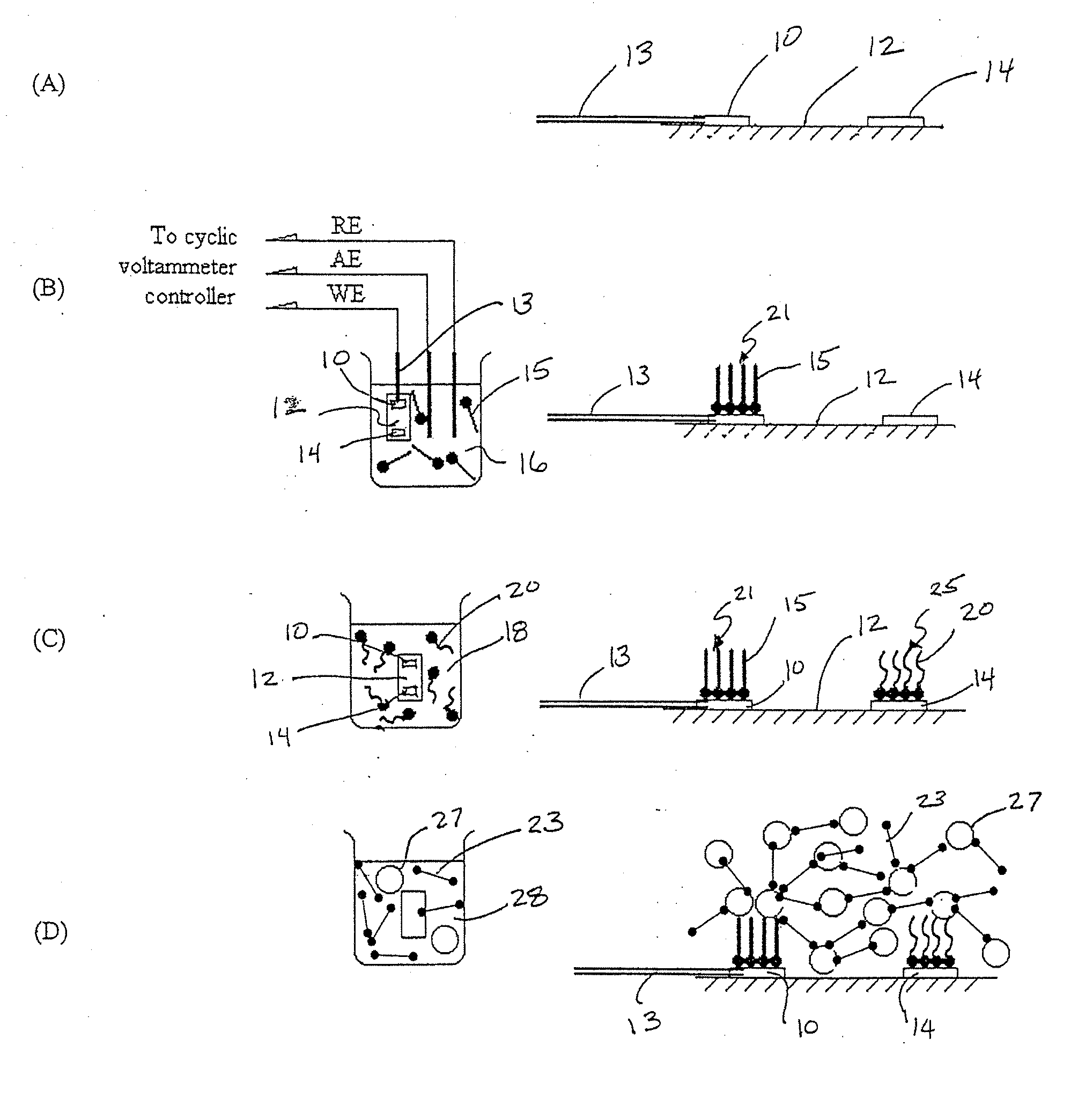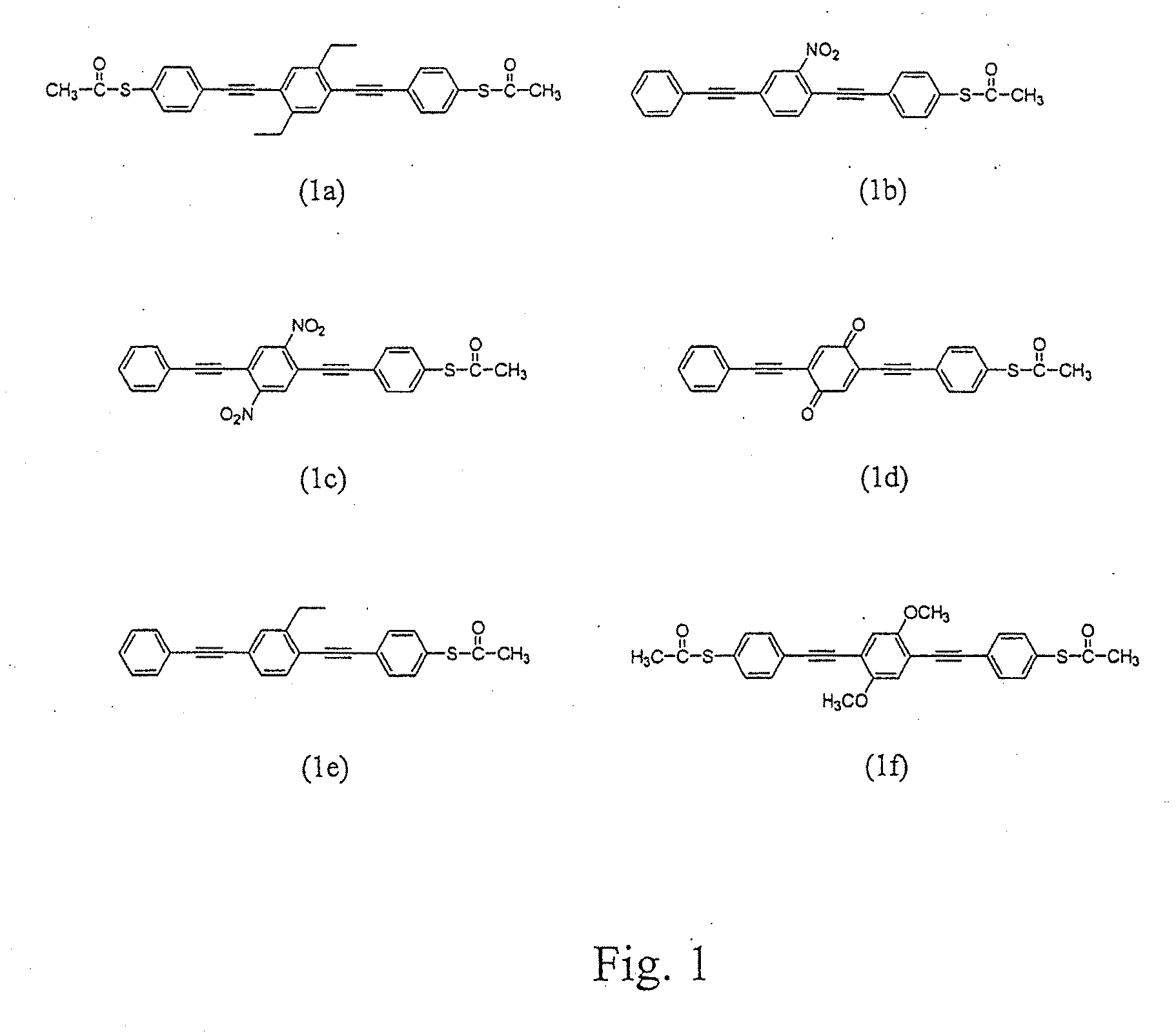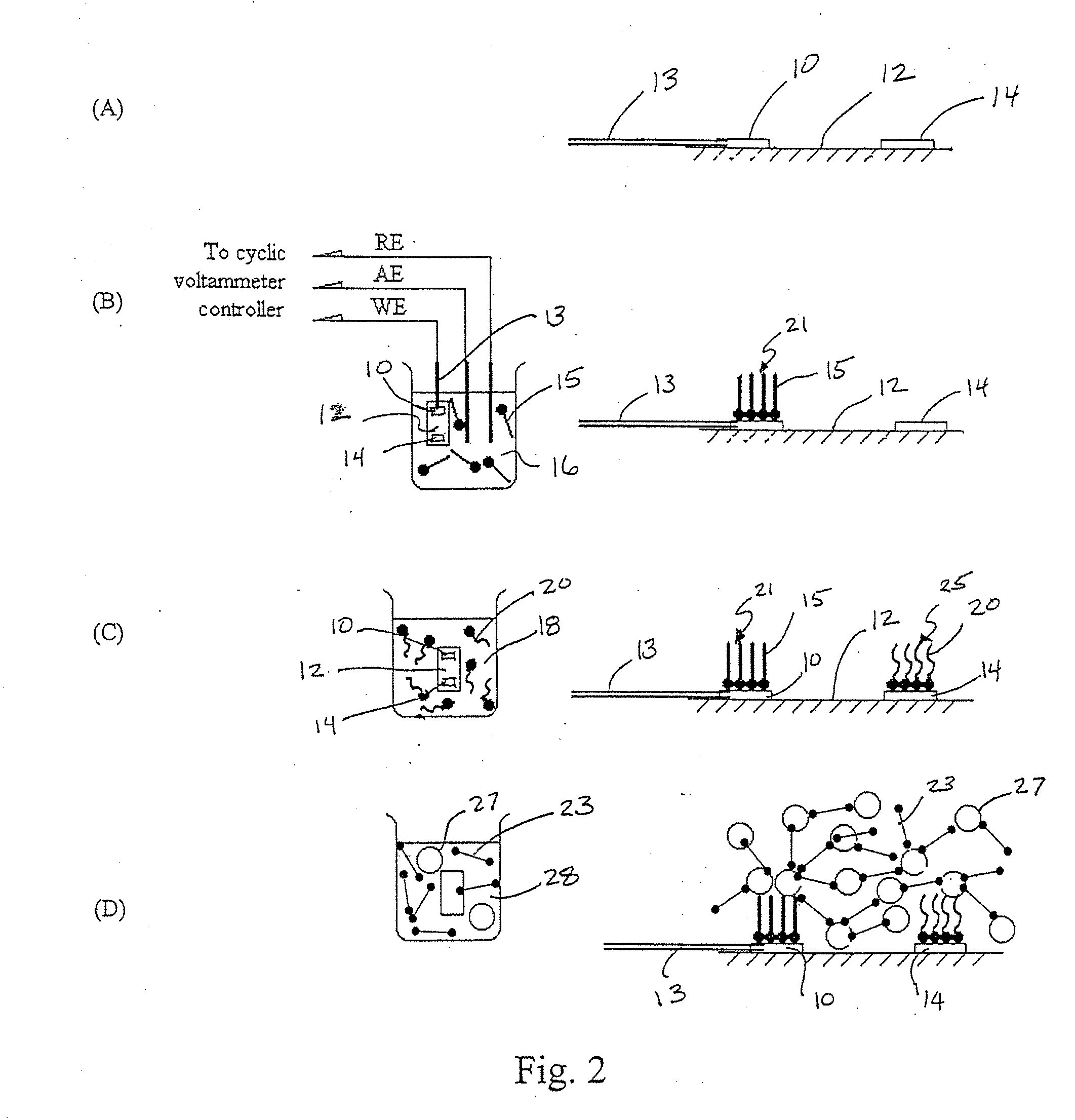Self-assembly of molecular devices
a molecular device and self-assembling technology, applied in the field of self-assembling molecular devices, can solve the problems of inability to control, precisely place such sams in a manner that would allow them to function as molecular devices, cannot be controlled, selectively assembled, etc., and achieves the effect of assembling molecular scale devices quickly and accurately, without undue expens
- Summary
- Abstract
- Description
- Claims
- Application Information
AI Technical Summary
Benefits of technology
Problems solved by technology
Method used
Image
Examples
examples
[0055] The following Example are intended to illustrate the efficacy of certain embodiments of the invention and are not intended to be limiting in any way.
Self-Assembly of Thiolates on Gold Using Base Deprotection.
Materials.
[0056] Ethanol (Pharmco Products Inc., 200 proof, USP Grade) was degassed with nitrogen prior to use. THF (Aldrich) was freshly distilled from Na / benzophenone under an atmosphere of nitrogen, and used immediately. Tetrabutylammonium tetrafluoroborate was purchased from Aldrich and used without further purification. The syntheses of the oligo(phenylene ethynylene)s are known, and are described in the references identified above. Au substrates were prepared by the sequential deposition of Cr (50 nm) and Au (120 nm) onto a clean single crystal Si wafer. Metal depositions were carried out using an Auto 306 Vacuum Coater (Edwards High Vacuum International) at an evaporation rate of ˜1 Å / s and a pressure of ˜4×10−6 mm Hg. Pt substrates were prepared by sputtering...
PUM
| Property | Measurement | Unit |
|---|---|---|
| diameter | aaaaa | aaaaa |
| diameter | aaaaa | aaaaa |
| length | aaaaa | aaaaa |
Abstract
Description
Claims
Application Information
 Login to View More
Login to View More - R&D
- Intellectual Property
- Life Sciences
- Materials
- Tech Scout
- Unparalleled Data Quality
- Higher Quality Content
- 60% Fewer Hallucinations
Browse by: Latest US Patents, China's latest patents, Technical Efficacy Thesaurus, Application Domain, Technology Topic, Popular Technical Reports.
© 2025 PatSnap. All rights reserved.Legal|Privacy policy|Modern Slavery Act Transparency Statement|Sitemap|About US| Contact US: help@patsnap.com



